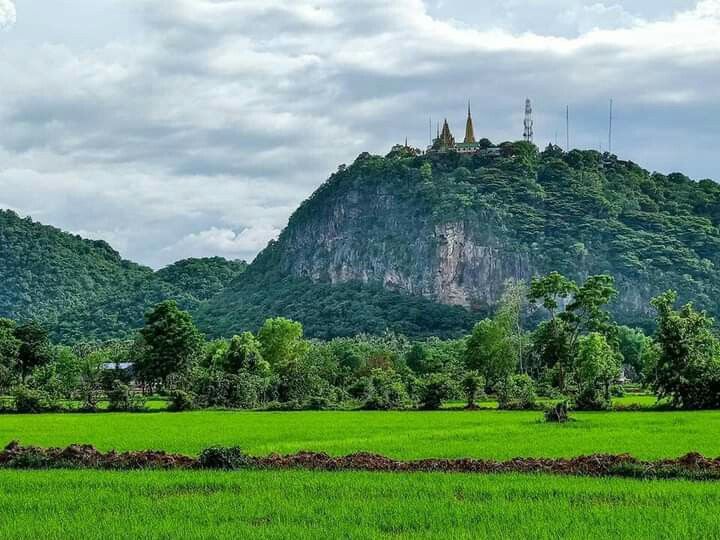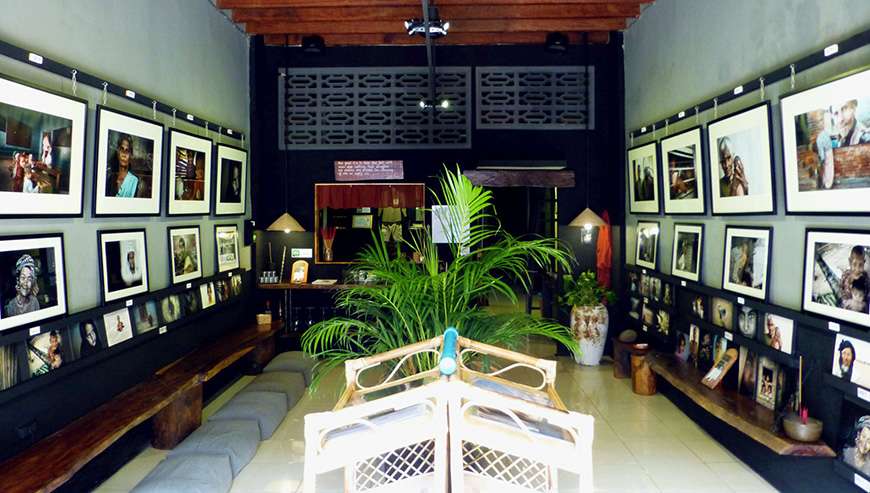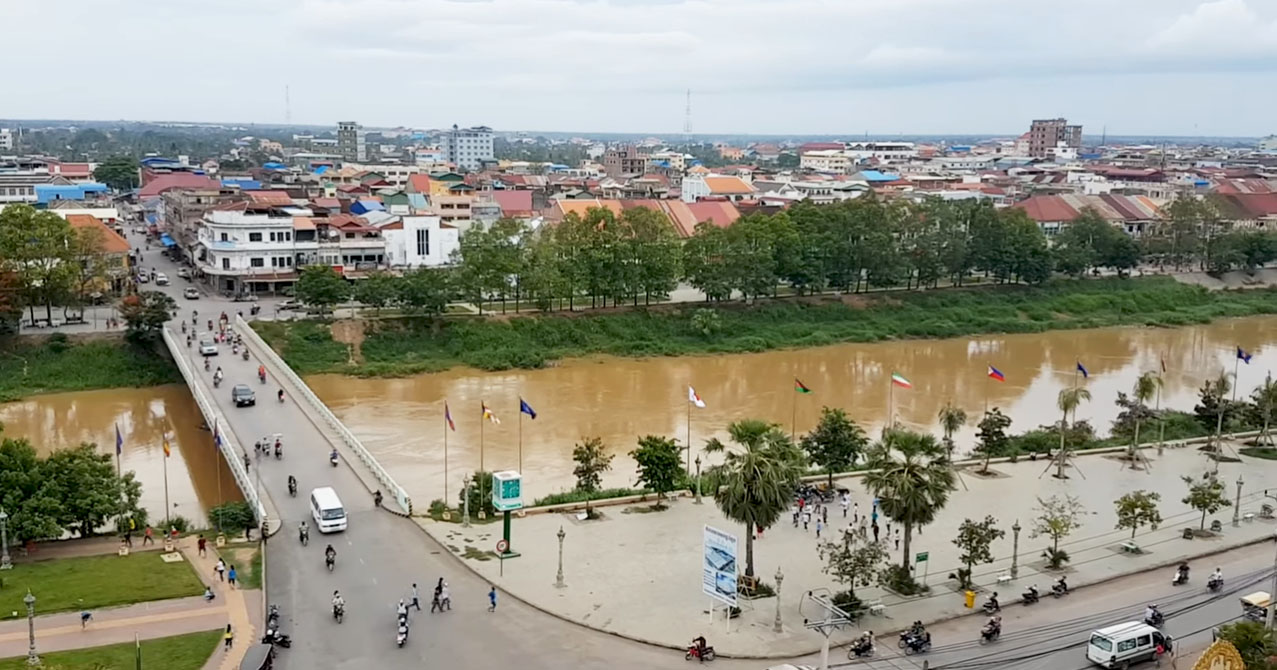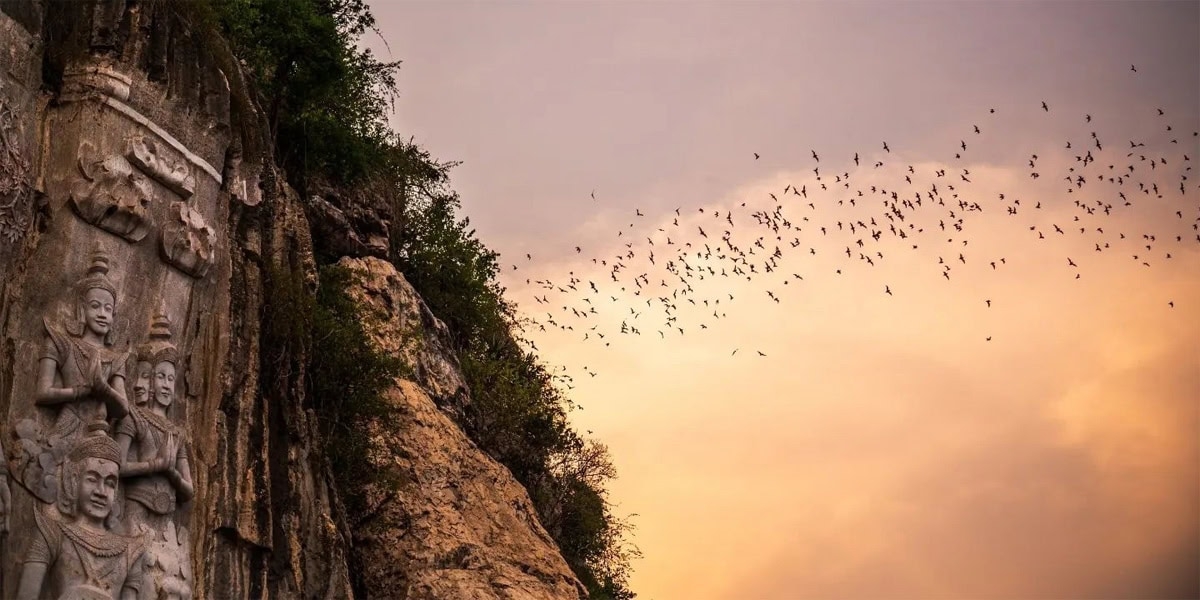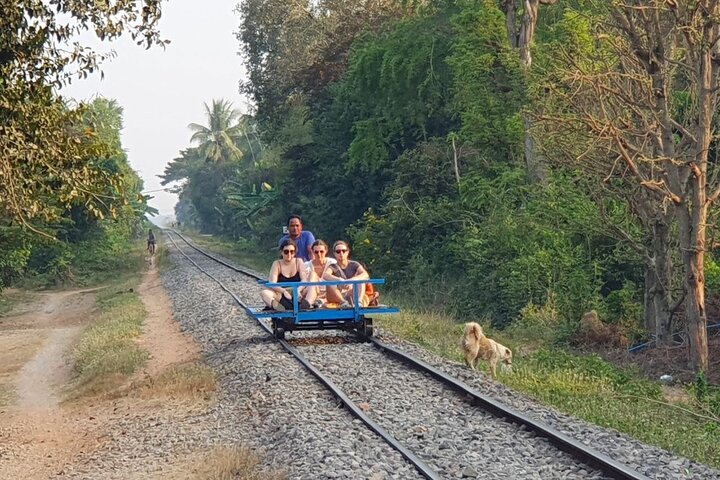Battambang
Battambang
Wat Ek Phnom is an important and historical temple complex located in Battambang Province, Cambodia. It is one of the oldest and most significant temples in the area, with a rich history dating back to the 11th century. The temple offers both a glimpse into Cambodia’s ancient architecture and a peaceful, serene setting for visitors to explore. It was likely dedicated to the Hindu god Shiva, but, like many temples in Cambodia, it underwent a transition to a Buddhist function after the decline of Hinduism in the region. The core of Wat Ek Phnom is its central brick structure, which remains one of the few temples in Cambodia made entirely from brick (rather than sandstone). The temple features an iconic tower-like structure, reflecting the early Angkorian style. Many of the walls still feature remnants of carvings and reliefs, though time has worn much of the artwork away.
Banan Temple is a fascinating ancient temple located in Battambang Province, in northwestern Cambodia. It is a smaller, lesser-known temple compared to the famous Angkor temples, but it offers a unique historical and cultural experience. The temple is perched atop Mount Banan, offering visitors both a glimpse into Cambodia’s rich history and breathtaking views of the surrounding landscape.
Banan Temple was built during the 11th century under the reign of the Angkorian king Suryavarman I. It is dedicated to Brahma, the Hindu god of creation, and was originally part of the larger Khmer Empire, which was characterized by grand temple constructions. The temple follows the traditional Angkorian style and was once a vibrant religious site, although much of its former grandeur has been lost over time.
The Banan Temple consists of several small towers or prangs, which are arranged in a row atop a hill. The temple follows the classic Khmer architectural style, with sanctuaries and prayer halls built using sandstone. The complex is smaller than the iconic Angkor temples, but it still offers a beautiful example of Angkorian design. Originally built as a Hindu temple, the site later transitioned to a Buddhist site. In fact, there is a small Buddhist shrine at the temple today, where locals and visitors alike come to pray. This reflects the religious transitions in Cambodia over the centuries, from Hinduism to Buddhism, and the adaptability of the temple for different spiritual practices.
Phnom Sampov is a prominent hilltop site located in Battambang Province, Cambodia. Known for its natural beauty, historical significance, and religious importance, it is one of the province’s top tourist destinations. The site offers visitors a combination of stunning views, cultural landmarks, and a glimpse into the region’s history, making it a popular place for both locals and tourists. Phnom Sampov has historical roots that date back to the Angkorian period (9th–15th centuries), and it is associated with the ancient Khmer Empire. The hill and its surrounding area are believed to have been used for Buddhist worship for centuries. The region was later influenced by both Hinduism and Buddhism, which are reflected in the religious structures found on the hill. Phnom Sampov is home to several Buddhist temples and shrines scattered across the hilltop. Visitors can explore pagodas, Buddha statues, and sacred sites while soaking in the peaceful atmosphere. The hill is also known for its caves and grottos, many of which have been used for religious purposes. The Sampov Cave houses a Buddhist shrine and is one of the main attractions.
Battambang is renowned for its well-preserved French colonial buildings, which give the city a distinct, old-world charm. Strolling through the city center, visitors can admire beautiful colonial-era structures, including former villas, shops, and the iconic Battambang Railway Station. The blend of traditional Cambodian and French architectural styles adds to the city’s unique character. The city is rich in Cambodian culture and history, offering numerous temples, pagodas, and museums. Battambang’s vibrant markets offer visitors the chance to sample local Cambodian cuisine, with fresh produce, street food, and traditional dishes such as amok (fish curry) and lok lak (stir-fried beef). The central market is a great place to explore the local flavors and purchase handmade crafts. Unlike the more bustling tourist destinations of Cambodia, Battambang retains a calm and relaxed atmosphere. With fewer crowds, visitors can enjoy leisurely walks through the city, sip coffee at local cafes, and experience the slower pace of life that characterizes much of rural Cambodia.
Battambang’s Batt Cave is one of the most unique and historically significant attractions in the area. It is located atop Phnom Sampeau, a hill about 12 kilometers from Battambang city center. The site is famous for its stunning views, its historical importance, and its connection to Cambodia’s tragic Khmer Rouge era. The Batt Cave is notorious for its association with the Khmer Rouge regime (1975-1979). During this dark period in Cambodian history, the caves were used as execution sites, where prisoners were taken to be killed. The Khmer Rouge regime, led by Pol Pot, brutally murdered millions of Cambodians, and many of the victims were taken to places like the Batt Cave. Phnom Sampeau, the mountain where the cave is located, offers panoramic views of the surrounding countryside, including rice fields, villages, and the city of Battambang in the distance. It is a peaceful spot with a quiet atmosphere, contrasting sharply with its dark past. The view from the top is a highlight for many visitors, offering an excellent opportunity for photography and reflection.
The bamboo train ride in Battambang, Cambodia, is a unique and adventurous experience that allows visitors to travel through rural Cambodia in a way that’s unlike any other form of transportation. Known locally as “norry,” the bamboo train consists of a flat bamboo platform mounted on two sets of wheels, powered by a small gasoline engine. It is a traditional and now tourist-friendly form of transport, originally used by locals to move goods and people along the railway tracks. The ride takes passengers along the old, somewhat dilapidated railway tracks that pass through beautiful countryside, rural villages, and lush landscapes. During the journey, you’ll likely see farmers working in the fields, children waving from the sides of the tracks, and other glimpses of everyday life in Cambodia. The platform is open, providing a very close connection to the surrounding nature, making it a truly authentic and picturesque ride. The bamboo train experience is an unforgettable way to explore the countryside of Battambang, offering both a nostalgic look at Cambodia’s past and a fun, off-the-beaten-path activity for visitors.
Create Your Dream Tour!
Feel free to adjust any details or add specific information relevant to your destination or travel agency. Let me know if you need further customization!

